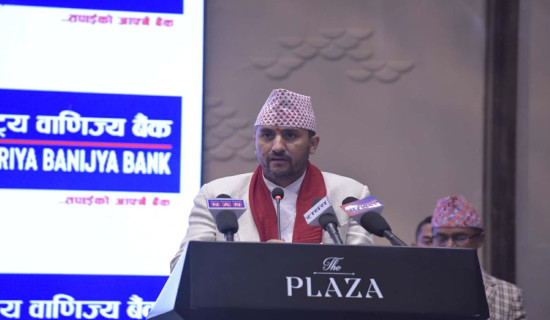- Thursday, 18 December 2025
Nepal's Battle Against Climate Change
Nepal, a country nestled in the Himalayas, is facing a pressing crisis in the form of climate change. The impact of rising temperatures and changing weather patterns has been particularly evident in the country's fragile mountain ecosystems. Glacial melt, erratic rainfall, and increased frequency of natural disasters are just some of the challenges Nepal is grappling with as it fights against this environmental crisis. This alarming projection is primarily attributed to the country's heavy reliance on climate-sensitive sectors such as food production, water resources, forests, biodiversity, and infrastructure. Furthermore, the increased frequency and intensity of extreme weather events such as floods and landslides pose a significant threat to the lives and livelihoods of communities. These climate risks not only exacerbate poverty and inequality but also hinder the country's efforts towards sustainable development and economic growth.
Nepal is home to a large number of the world's glaciers. Because of their importance in regulating world temperature, freshwater supply and massive ice stores, the Himalayas are often referred to as the "Third Pole". However, as a result of climate change, these glaciers are receding at an alarming rate. The vast majority of Nepali people rely on rivers and streams for drinking water and irrigation. These water resources are under increasing pressure due to climate change. Melting glaciers and erratic water flow patterns will have serious implications for communities downstream. Changing in water flow disrupts drinking water supply and irrigation schedules, making it challenging for farmers to grow crops and potentially leading to conflicts over water resources. Furthermore, the reduced availability of water can also impact hydropower generation, which is a significant source of hydroelectricity for Nepal.
Glacial Retreat
Nepal is home to numerous glaciers, which are melting at an alarming rate due to rising temperatures. This phenomenon directly impacts water resources as these glaciers feed into major rivers, providing water for drinking, agriculture, and hydropower generation. The accelerated melting of water increases the risk of glacial lake outburst floods (GLOFs), which can devastate downstream communities. Accelerated glacial melt not only contributes to rising sea levels but also poses a direct threat to downstream communities. The consequences are severe, affecting agriculture, water resources, and the safety of those who live in the vulnerable areas. Furthermore, the loss of glaciers also impacts the delicate balance of ecosystems in these regions, leading to disruptions in biodiversity and potentially causing the extinction of certain species. Additionally, the economic implications cannot be overlooked, as communities heavily rely on glacier-fed rivers for tourism and recreational activities, which may suffer significant losses due to reduced water flow and altered landscapes.
The rich biodiversity of Nepal is under threat. As temperatures rise, species are being pushed to higher altitudes or facing extinction. This affects not only the ecosystems but also the livelihoods of many communities dependent on these resources. In addition to the direct impact on ecosystems and livelihoods, biodiversity loss also disrupts the delicate balance of natural processes such as pollination and nutrient cycling. This can have cascading effects on agriculture, water availability, and overall ecosystem stability, further exacerbating the challenges faced by communities in Nepal.
Agriculture and food security
Agriculture is the lifeblood of Nepal's economy. Over 65 per cent of the population is engaged in farming, and it remains the primary source of livelihood. However, changing climate patterns are taking a toll on the agricultural sector, making it increasingly difficult for farmers to predict the best times to sow seeds and harvest crops. Nepal relies heavily on the monsoon rains for agriculture. Changing monsoon patterns, with increased uncertainty in their timing and intensity, have led to prolonged dry spells and more intense rainfall, resulting in crop failures. The monsoon season, critical for Nepal's agriculture, has become erratic. Prolonged dry spells and sudden bursts of heavy rain disrupt planting and harvesting schedules, leading to crop failures and food security concerns. Nepal is also grappling with prolonged droughts, especially in the mountain region. Droughts result in water scarcity and food shortages, often forcing rural communities to migrate to urban areas in search of alternative livelihoods. Rising temperatures force farmers to shift cultivation zones to higher elevations, altering the crops they can grow and potentially reducing overall agricultural productivity. Climate-related hazards have not only affected agricultural productivity but have also led to the displacement of rural communities, as they are forced to migrate in search of alternative livelihoods.
Community Vulnerability
The effects of climate change extend to community vulnerability. Rising temperatures increase the risk of heat-related health issues, especially in the Terai region. Furthermore, a higher frequency of extreme weather events, like landslides and floods, disrupts lives, displaces communities, and damages infrastructure. The most vulnerable, often those in remote areas, face the greatest risks. As the impacts of climate change continue to intensify, Nepal's fragile ecosystems and mountain communities are at greater risk than ever before. The urgency to address this issue goes beyond national boundaries, calling for a global commitment to reduce greenhouse gas emissions and implement sustainable practices. By taking immediate action, we can safeguard not only Nepal's unique biodiversity and cultural heritage but also contribute to the overall resilience of our planet in the face of climate change.
(The author writes on border, water resources and climate change issues.)
















